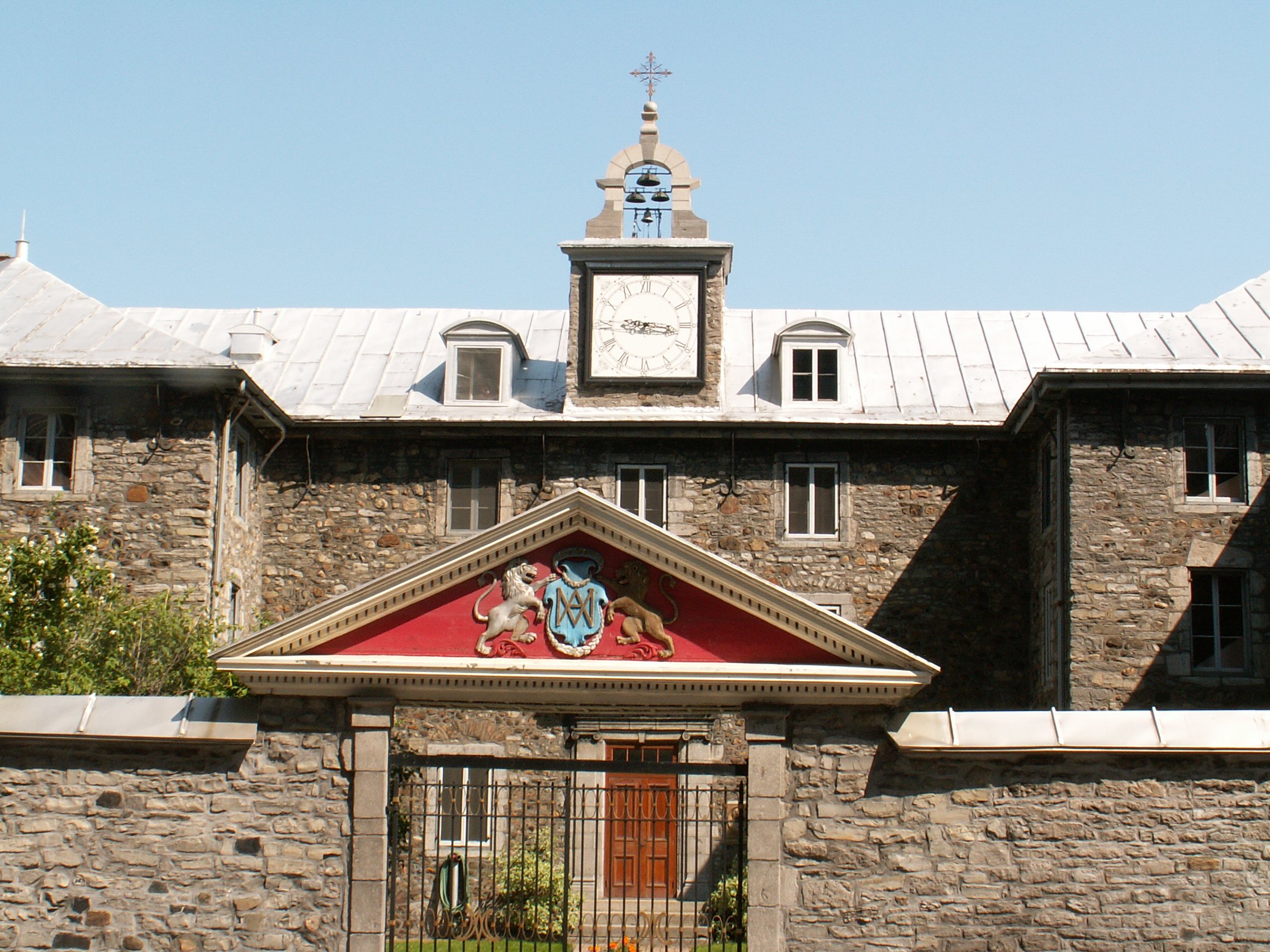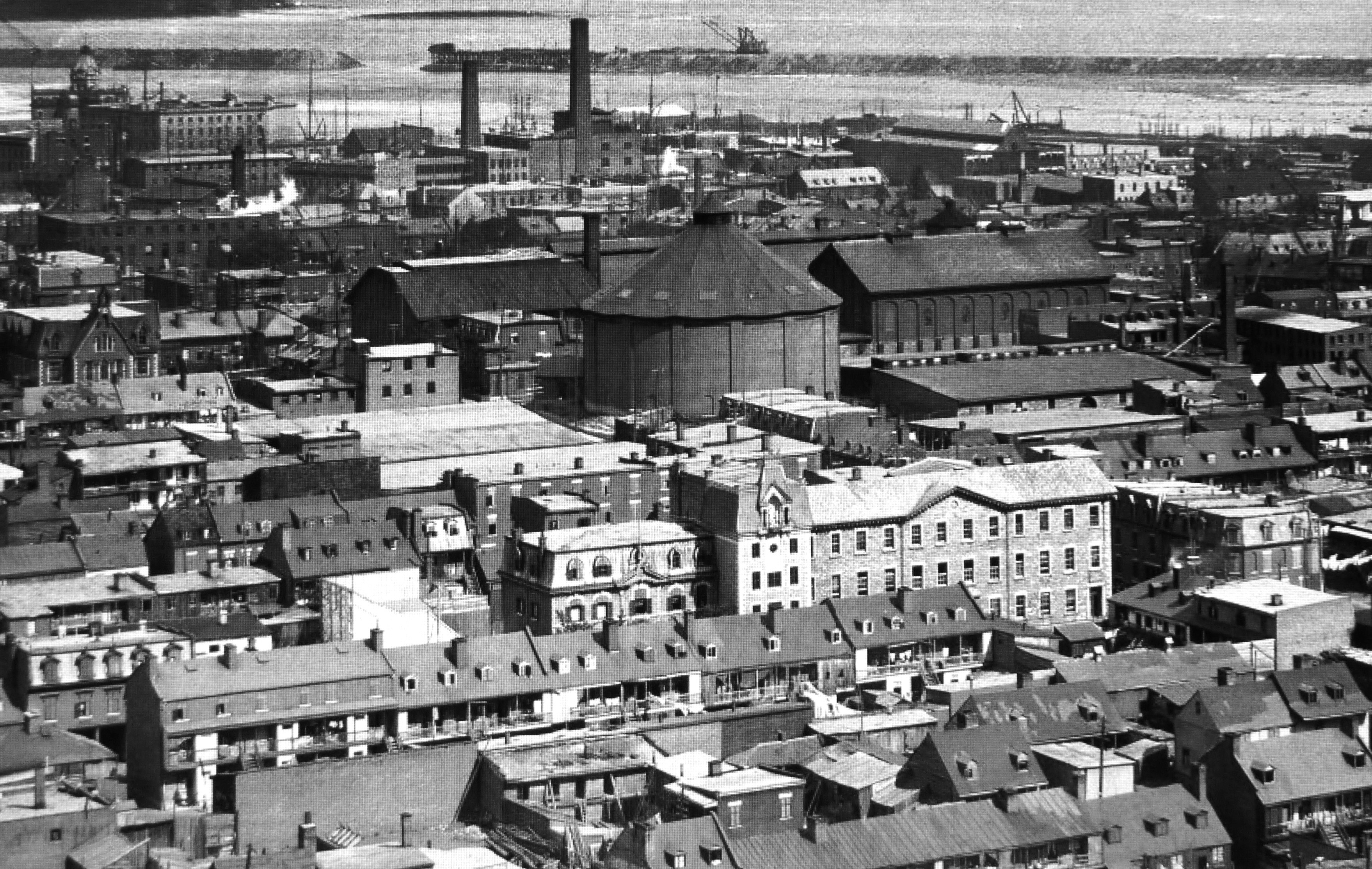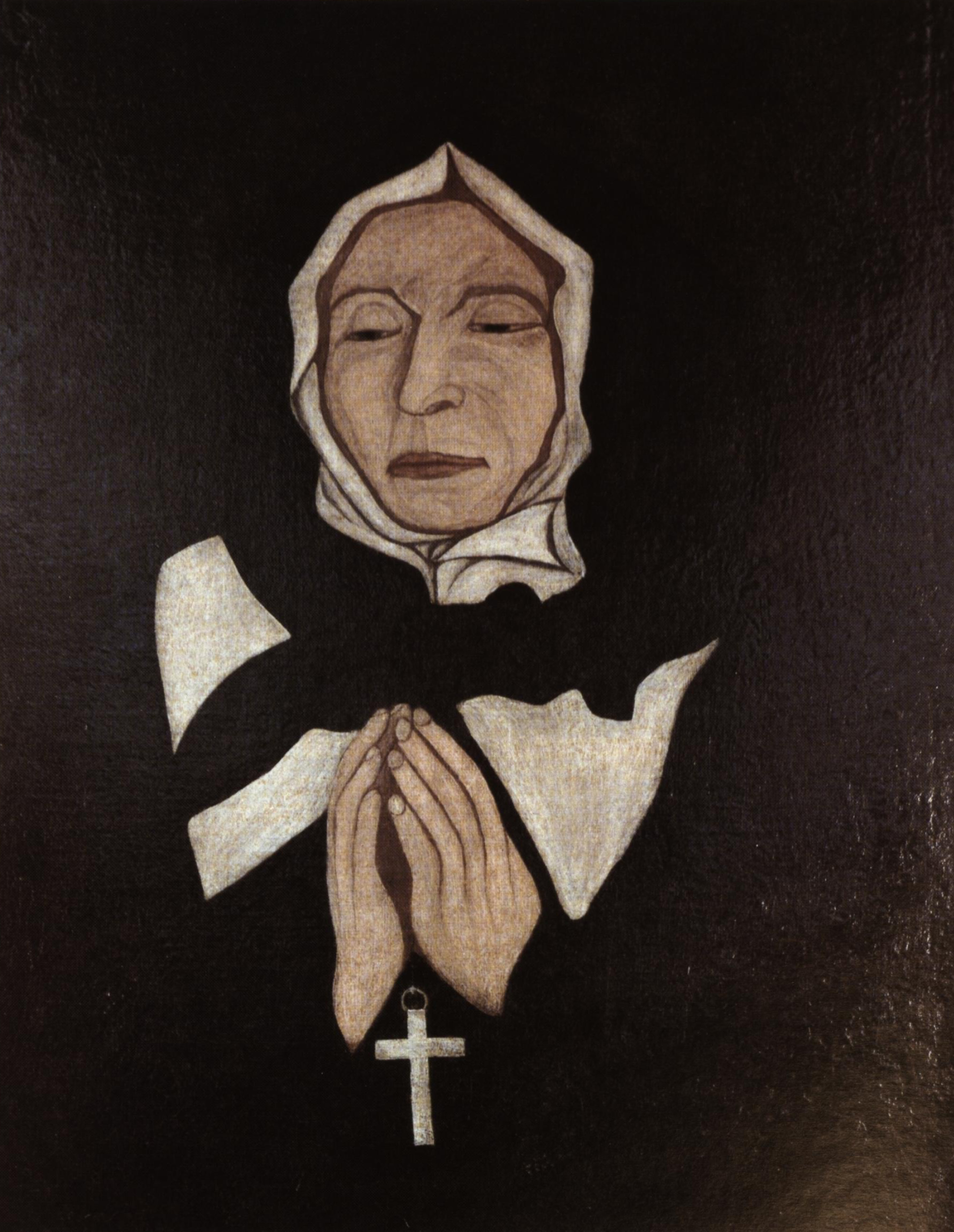|
Pointe-Saint-Charles
Pointe-Saint-Charles (also known in English as Point Saint Charles, and locally as The Point, or "PSC") is a neighbourhood in the borough of Le Sud-Ouest in the city of Montreal, Quebec, Canada. Historically a working-class area, the creation of many new housing units, the recycling of industrial buildings into business incubators, lofts, and condos, the 2002 re-opening of the canal as a recreation and tourism area, the improvement of public spaces, and heritage enhancement have all helped transform the neighbourhood and attract new residents. Community groups continue to be pro-active in areas related to the fight against poverty and the improvement of living conditions. History Twenty years after the founding of Ville-Marie (Montreal) by Paul Chomedey, Sieur de Maisonneuve in 1642, he granted an area on the pointe Saint-Charles, extending into the St. Lawrence, to St. Marguerite Bourgeoys for agricultural use by the Congrégation de Notre-Dame. The sisters operated a sharecrop ... [...More Info...] [...Related Items...] OR: [Wikipedia] [Google] [Baidu] |
Le Sud-Ouest
Le Sud-Ouest ( en, "the southwest") is a borough (''arrondissement'') of the city of Montreal, Quebec, Canada. Geography Le Sud-Ouest is an amalgam of several neighbourhoods with highly distinct histories and identities, mainly with working-class and industrial origins, grouped around the Lachine Canal. These include Saint-Henri, Little Burgundy, and Griffintown to the north of the canal, and Ville-Émard, Côte-Saint-Paul, and Pointe-Saint-Charles to the south. Located southwest of downtown Montreal (hence the name), the borough is bordered to the northwest by Côte-des-Neiges—Notre-Dame-de-Grâce, to the northeast by the Ville-Marie borough, to the south by the borough of Verdun, to the west by the borough of LaSalle and the town of Montreal West, and to the north by the city of Westmount. The Saint Lawrence River is located upon part of its eastern edge. History :''See History of Saint-Henri, History of Little Burgundy, History of Ville-Émard, History of Côte-S ... [...More Info...] [...Related Items...] OR: [Wikipedia] [Google] [Baidu] |
Maison Saint-Gabriel
The Maison Saint-Gabriel Museum is located in Montreal, Quebec and is dedicated to preserving the history, heritage and artifacts of the settlers of New France in the mid 17th century. The museum consists of a small farm, which has been administered for more than 300 years by the Sisters of the Congregation of Notre Dame of Montreal, founded by Marguerite Bourgeoys in Montreal in 1658. The site was designated a National Historic Site of Canada in 2007. Beginning On October 31, 1662, Paul de Chomedey de Maisonneuve conceded land in Pointe-Saint-Charles to Marguerite Bourgeoys. The purpose of this land was to establish a farm that would feed the Congregation of Notre Dame of Montreal and support its work. In order to plant crops, mainly corn, wheat, and pumpkin, the land was cleared by engagés. These workers helped with the heavy work, and also helped protect the Congregation from any enemy attacks. In 1668, Marguerite Bourgeoys bought land adjacent to hers, on which stood a hous ... [...More Info...] [...Related Items...] OR: [Wikipedia] [Google] [Baidu] |
Sulpician Order
The Society of Priests of Saint-Sulpice (french: Compagnie des Prêtres de Saint-Sulpice), abbreviated PSS also known as the Sulpicians is a society of apostolic life of Pontifical Right for men, named after the Church of Saint-Sulpice, Paris, where it was founded. The members of the Society add the nominal letters PSS after their names to indicate membership in the Congregation. Typically, priests become members of the Society of the Priests of St. Sulpice only after ordination and some years of pastoral work. The purpose of the society is mainly the education of priests and to some extent parish work. As their main role is the education of those preparing to become priests, Sulpicians place great emphasis on the academic and spiritual formation of their own members, who commit themselves to undergoing lifelong development in these areas. The Society is divided into three provinces, operating in various countries: the Province of France, Canada, and the United States. In Fran ... [...More Info...] [...Related Items...] OR: [Wikipedia] [Google] [Baidu] |
Montreal Technoparc
The Parc d'entreprises de la Pointe-Saint-Charles, formerly known as the Montreal Technoparc and Adaport Victoria, is an industrial park and former industrial dump in the Pointe-Saint-Charles neighbourhood of Montreal, between the Champlain and Victoria bridges.http://www.canada.com/montrealgazette/news/story.html?id=76d95baa-6189-4060-88c7-2e5e452f95fd — Montreal Gazette article about contamination at the site. History The site was formerly marshland adjacent to the St. Lawrence River. It was used as a landfill and dumpsite from 1866 until 1966, and then was paved to serve as a parking lot for Expo 67 and was named ''Autoparc Victoria''. Following the Expo, it briefly served as the site of the Victoria STOLport Victoria STOLport was a short take-off and landing aerodrome near downtown Montreal during the mid-1970s. The STOLport had been constructed on the former parking lot for Expo 67. The airport operated a two-year STOL demonstration service, with t ..., or ''adapor ... [...More Info...] [...Related Items...] OR: [Wikipedia] [Google] [Baidu] |
Charlevoix (Montreal Metro)
Charlevoix station is a Montreal Metro station in the borough of Le Sud-Ouest in Montreal, Quebec, Canada. It is operated by the Société de transport de Montréal (STM) and serves the Green Line. It is located in the district of Pointe-Saint-Charles. It opened on September 3, 1978, as part of the extension of the Green Line westward to Angrignon station. Architecture and art Designed by Ayotte et Bergeron, it was built as a stacked platform station, in order to reduce the width of the station owing to the weak Utica Shale in which it was built. The lower (Honoré-Beaugrand) platform is below the surface, making this the deepest station in the network, as well as the lowest in altitude (the lower platform is below sea level). The station has one ticket hall and one access. The long stairways to the platforms, built around a light shaft, are brightened by two stained-glass windows by Mario Merola and Pierre Osterrath. Origin of the name This station is named for rue Charl ... [...More Info...] [...Related Items...] OR: [Wikipedia] [Google] [Baidu] |
List Of Neighborhoods In Montreal
This is the list of the neighbourhoods in the city of Montreal, Quebec, Canada. They are sorted by the borough they are located in. Ahuntsic-Cartierville * Ahuntsic * Nouveau-Bordeaux Nouveau-Bordeaux ( en, New Bordeaux) originally known as Bordeaux, is a neighbourhood in north end Montreal, Quebec, Canada located in the borough of Ahuntsic-Cartierville. Nouveau-Bordeaux is bordered on the north by Rivière des Prairies, to t ... * Cartierville *Saint-Sulpice * Sault-au-Récollet (Île de la Visitation) Anjou, Quebec, Anjou *Bas-Anjou: The Southeastern older portion, where the main services are located (town Hall, main library, fire station, high school) *Haut-Anjou: The L-shaped part consisting of every street North of Autoroute 40 and every street West of Autoroute 25 Côte-des-Neiges–Notre-Dame-de-Grâce * Côte-des-Neiges * Notre-Dame-de-Grâce **Benny Farm * Snowdon, Montreal, Snowdon * Le Triangle Lachine, Quebec, Lachine * Ville Saint-Pierre LaSalle, Quebec, La ... [...More Info...] [...Related Items...] OR: [Wikipedia] [Google] [Baidu] |
Griffintown
Griffintown is a historic neighbourhood of Montreal, Quebec, southwest of downtown. The area existed as a functional neighbourhood from the 1820s until the 1960s, and was mainly populated by Irish immigrants and their descendants. Mostly depopulated since then, the neighbourhood has been undergoing redevelopment since the early 2010s. One can identify Griffintown as the portion of the ward of St. Ann located north of the Lachine Canal; the part south of the canal is now part of Pointe-Saint-Charles. This part of the ward was delimited by Notre-Dame Street to the North, the Bonaventure Expressway to the east, and a short segment of the city limit between Notre-Dame Street and the canal west of the St. Gabriel Locks to the west. It was the earliest and largest faubourg annexed to Old Montreal before the introduction of the tram car in the 1840s. Etymology The name ''Griffintown'' was derived from Mary Griffin. Griffin illegally obtained the lease to the land from a business associat ... [...More Info...] [...Related Items...] OR: [Wikipedia] [Google] [Baidu] |
CLSC
CLSCs (''centre local de services communautaires'', local community service centre) in Quebec are free clinics and hospitals run and maintained by the Quebec government. They are a form of community health centre. The service was launched in the early 1960s after major reforms in the health and social services system were made by the Castonguay-Nepveu Commission during the Quiet Revolution era in the 1960s. Until the commission, most health and social services had been generally under jurisdiction of religious-affiliated agencies, primarily those of the Roman Catholic Church. After the commission, the Quebec government, with several measures made by the Quebec Liberal Party of Jean Lesage Jean Lesage (; 10 June 1912 – 12 December 1980) was a Canadian lawyer and politician from Quebec. He served as the 19th premier of Quebec from 22 June 1960 to 16 June 1966. Alongside Georges-Émile Lapalme, René Lévesque and others, he is o ..., took full control of the health and social ... [...More Info...] [...Related Items...] OR: [Wikipedia] [Google] [Baidu] |
Congrégation De Notre-Dame
The Congrégation de Notre Dame (CND) is a religious community for women founded in 1658 in Ville Marie (Montreal), in the colony of New France, now part of Canada. It was established by Marguerite Bourgeoys, who was recruited in France to create a religious community in Ville Marie. She developed a congregation for women that was not cloistered; the sisters were allowed to live and work outside the convent. The Congregation held an important role in the development of New France, as it supported women and girls in the colony and offered roles for them outside the home. It also founded a boarding school for girls' education, and watched over the ''filles du roi'', women immigrants whose passage to the colony was paid by the Crown, which wished to encourage marriages and the development of families in the colony. Some ''filles de roi'' and sisters served as missionaries to the First Nations peoples. The community's motherhouse has been based in Montreal for more than 350 years. Ma ... [...More Info...] [...Related Items...] OR: [Wikipedia] [Google] [Baidu] |
Montreal
Montreal ( ; officially Montréal, ) is the List of the largest municipalities in Canada by population, second-most populous city in Canada and List of towns in Quebec, most populous city in the Provinces and territories of Canada, Canadian province of Quebec. Founded in 1642 as ''Fort Ville-Marie, Ville-Marie'', or "City of Mary", it is named after Mount Royal, the triple-peaked hill around which the early city of Ville-Marie is built. The city is centred on the Island of Montreal, which obtained its name from the same origin as the city, and a few much smaller peripheral islands, the largest of which is Île Bizard. The city is east of the national capital Ottawa, and southwest of the provincial capital, Quebec City. As of 2021, the city had a population of 1,762,949, and a Census Metropolitan Area#Census metropolitan areas, metropolitan population of 4,291,732, making it the List of the largest municipalities in Canada by population, second-largest city, and List of cen ... [...More Info...] [...Related Items...] OR: [Wikipedia] [Google] [Baidu] |
Irish-Canadians
Irish Canadians ( ga, Gael-Cheanadaigh) are Canadians, Canadian citizens who have full or partial Irish people, Irish heritage including descendants who trace their ancestry to immigrants who originated in Ireland. 1.2 million Irish immigrants arrived from 1825 to 1970, and at least half of those in the period from 1831 to 1850. By 1867, they were the second largest ethnic group (after the French), and comprised 24% of Canada's population. The 1931 national census counted 1,230,000 Canadians of Irish descent, half of whom lived in Ontario. About one-third were Catholic in 1931 and two-thirds Protestant. The Irish immigrants were majority Protestant before the Great Famine (Ireland), Irish famine years of the late 1840s, when far more Catholics than Protestants arrived. Even larger numbers of Catholics headed to the United States; others went to Great Britain and Australia. As of the 2016 Canadian census, 2016 Canada Census, 4,627,000 Canadians, or 13.43% of the population, claim ... [...More Info...] [...Related Items...] OR: [Wikipedia] [Google] [Baidu] |
Marguerite Bourgeoys
Marguerite Bourgeoys (17 April 162012 January 1700), was a French nun and founder of the Congregation of Notre Dame of Montreal in the colony of New France, now part of Québec, Canada. Born in Troyes, she became part of a sodality, ministering to the poor from outside the convent. She was recruited by the governor of Montreal to set up a convent in New France, and she sailed to Fort Ville-Marie (now Montreal) by 1653. There she developed the convent. She and her congregation educated young girls, the poor, and children of First Nations until shortly before her death in early 1700. She is significant for developing one of the first uncloistered religious communities in the Catholic Church. Declared "venerable" by the pope in 1878, she was canonized in 1982 and declared a saint by the Catholic Church, the first female saint of Canada. Early life Marguerite Bourgeoys was born on 17 April 1620 in Troyes, then in the ancient Province of Champagne in the Kingdom of France. The daugh ... [...More Info...] [...Related Items...] OR: [Wikipedia] [Google] [Baidu] |







